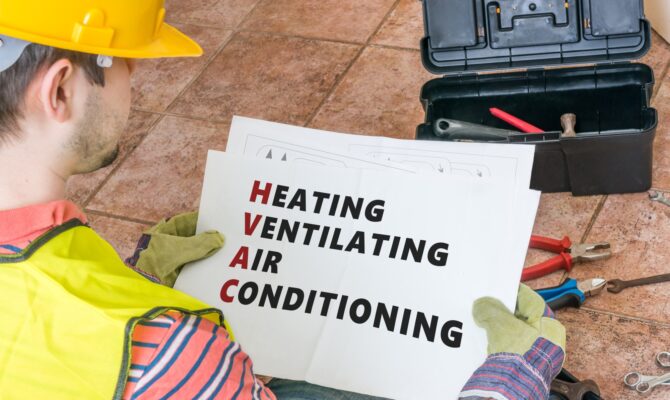Asbestos, once a popular building material, is now a name that raises concerns about health and safety. Found predominantly in older constructions, its presence is not immediately obvious. However, when disturbed, asbestos fibers can become airborne and pose severe health risks. Understanding the dangers and proper management of asbestos is vital, especially during renovations or demolitions of older structures. This article aims to shed light on key considerations for safely handling asbestos exposure, providing practical advice for homeowners, workers, and anyone concerned about this hazardous material.
- Identifying Asbestos in Your Environment
Recognizing asbestos in your surroundings is the first step toward managing its risks. Asbestos was widely used in a variety of building materials, such as insulation, floor tiles, and roofing shingles, due to its fire-resistant properties. Its appearance can vary, making visual identification challenging. If your building dates back to before the 1980s, it’s wise to suspect the presence of asbestos. However, the most reliable way to confirm its presence is through professional testing. This involves sampling materials and analyzing them in a lab, ensuring accurate identification and subsequent safe handling.
- Seeking Professional Assistance
When dealing with asbestos, it’s important to engage professionals who specialize in its safe removal. Attempting to handle asbestos-containing materials yourself can lead to accidental exposure and contamination. Professional asbestos removers are trained in safe handling, removal, and disposal of these materials. They ensure that asbestos is dealt with in a manner that minimizes health risks. Additionally, resources like Mesothelioma Hope provide valuable information and support for those affected by asbestos-related diseases, offering a wealth of knowledge on handling these situations with care and expertise.
- Understanding the Health Risks
Asbestos exposure is linked to several serious health issues. Inhaling asbestos fibers can lead to diseases such as asbestosis, a chronic lung condition, and various forms of lung cancer. One of the most serious conditions associated with asbestos exposure is mesothelioma, a rare and aggressive cancer affecting the lining of the lungs or abdomen. These diseases often have a long latency period, meaning symptoms can take decades to appear after exposure. Awareness of these risks is crucial for anyone living or working in environments where asbestos might be present.
- Legal Requirements and Regulations
Managing asbestos is not only a matter of health but also of legal compliance. Various laws and regulations govern the handling, removal, and disposal of asbestos. These regulations are in place to protect not just the individuals handling asbestos but also the public and the environment. Non-compliance can lead to significant legal ramifications, including fines and lawsuits. It’s essential to understand your local and national laws regarding asbestos, which often require notification of asbestos removal projects and adherence to specific safety protocols.
- Preparing for Asbestos Removal
Preparation is key to safe asbestos removal. This process includes sealing off the affected area to prevent the spread of fibers, setting up decontamination units, and notifying local authorities or building occupants as required by law. Professional asbestos removers will also establish a clear plan of action, detailing how the asbestos will be removed, how the area will be cleaned, and how the asbestos waste will be disposed of safely. Proper preparation ensures that the removal process is conducted smoothly and safely, reducing the risk of exposure.
- Choosing the Right Protective Gear
Choosing and using the right protective gear is essential to prevent inhalation or ingestion of asbestos fibers. This includes wearing a properly fitted respirator with a HEPA filter, disposable coveralls, gloves, and protective footwear. It’s important that this gear is worn at all times in the contaminated area and disposed of correctly after use. Regular workers should also undergo fit testing for respirators and training in using protective equipment to ensure maximum safety during asbestos removal.
- Safe Asbestos Disposal Methods
After removal, the safe disposal of asbestos is a critical step. Asbestos waste, including contaminated materials and protective gear, must be handled with utmost care to prevent further exposure and environmental contamination. This waste should be wetted down to reduce dust, sealed in labeled, heavy-duty plastic bags, and transported to designated disposal facilities that can handle hazardous materials. It’s crucial to follow local guidelines for asbestos disposal, as improper handling can lead to serious legal and environmental consequences. Ensuring that asbestos is disposed of correctly is an essential part of the removal process, safeguarding public health and the environment.
- Monitoring Air Quality
Maintaining good air quality during and after asbestos removal is essential. Air monitoring involves testing the air for asbestos fibers to ensure that it remains at safe levels throughout the removal process. This is typically done by professionals using specialized equipment. Post-removal air monitoring is also important to confirm that the area is safe for reoccupation. These measures help to ensure that the removal process has been thorough and that no residual fibers remain in the air, providing peace of mind for occupants and workers alike.
- Training and Awareness
Education and training are key components in the safe handling of asbestos. Workers involved in asbestos removal should undergo comprehensive training on the health risks, safe handling practices, use of protective equipment, and emergency procedures. This training helps to minimize the risk of accidental exposure and ensures that everyone involved is aware of the correct procedures for dealing with asbestos safely. Additionally, building owners and occupants should be informed about the presence of asbestos and the precautions they should take to avoid disturbing it.
- Financial Considerations
Dealing with asbestos can be costly, but it is a necessary investment in health and safety. The costs can include professional testing, removal services, protective equipment, and disposal fees. Homeowners and building managers should budget accordingly and may want to explore financial assistance or insurance coverage options that can help offset these expenses. In some cases, government grants or subsidies may be available for asbestos removal, especially in public buildings or low-income housing.
- Health Monitoring Post-Exposure
For individuals who have been exposed to asbestos, regular health monitoring is vital. This includes routine check-ups and screenings for asbestos-related diseases, particularly for those with a history of prolonged exposure. Early detection of asbestos-related conditions can significantly improve treatment outcomes. Individuals should inform their healthcare providers about their exposure history to ensure appropriate monitoring and care.
Conclusion
Dealing with asbestos exposure requires a multifaceted approach that encompasses identification, professional handling, legal compliance, safe disposal, and ongoing vigilance. Understanding the risks and taking the necessary precautions is crucial for anyone dealing with this hazardous material. It’s essential to stay informed, follow best practices, and prioritize safety to minimize the health risks associated with asbestos.



